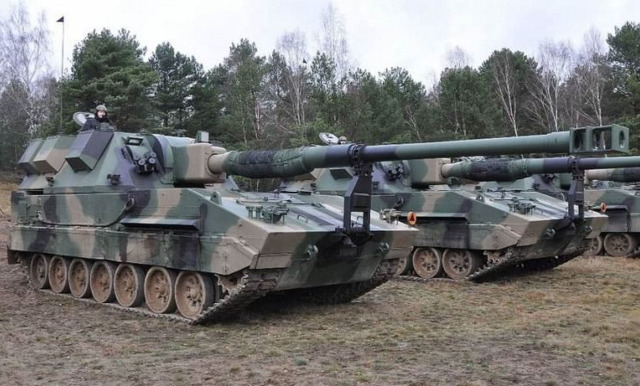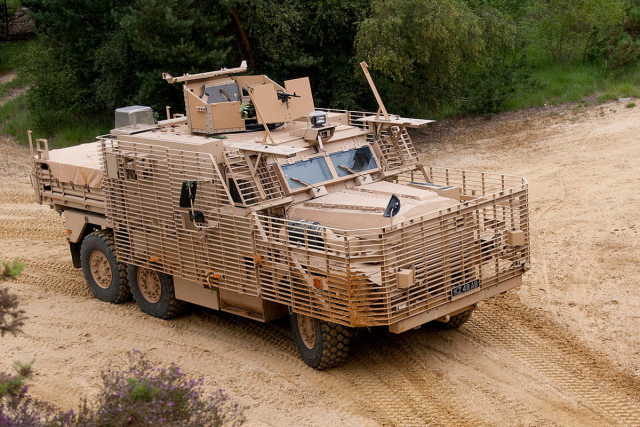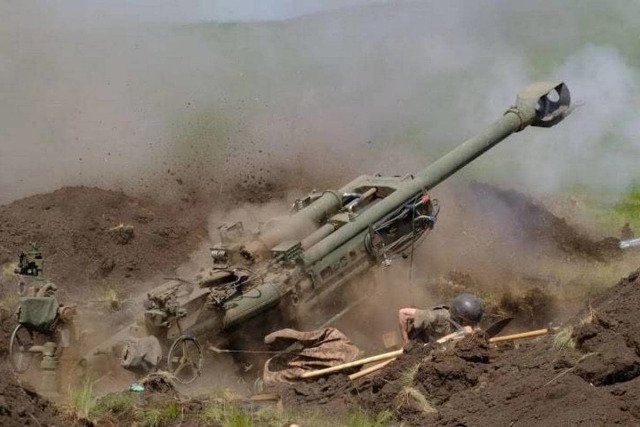The huge amount of military equipment provided to Kiev caused its own problems. The proposed article "Pandora's Box: the Challenge of Western Assistance to Ukraine" examines the transition of the Armed Forces of Ukraine (AFU) from obsolete Soviet-era weapons to NATO standards.
As before, the text is preserved in the style of the author. [Notes IVi are given in square brackets]
The author, Samuel Cranny–Evans, has a degree in military studies from the University of Kent, from which he graduated with honors in 2012, having written a dissertation on the morale of the Russian population during World War II. As a leading analyst on ground combat platforms, he worked for five years in the Janes information group. After that, in October 2021, he joined RUSI (Royal United Services Institute, or Royal United Arms Institute) as a research analyst in the field of intelligence and combat control systems (C4ISR).
Pandora's Box: the challenge of Western aid to Ukraine
Ukraine's call for support has led to an unprecedented response from Western governments around the world, as a result of which many have sent assistance in the form of armored combat vehicles, artillery systems, anti-tank weapons and counter-battery radars.
The list is extensive and, according to the database maintained by Joost Olimans and Stein Mitzer from the Oryx blog [oryxspioenkop.com ], includes hundreds of ground vehicles only. The total number of promised and delivered equipment is classified in Table 1, which indicates that Ukraine is in the process or has already accepted the delivery of a huge number of systems.
Many of these systems are new to the Ukrainian armed forces [hereinafter referred to as the AFU], and they did not operate them before the war. This situation may create problems for Ukraine in terms of maintenance and supplies.
Table 1. Source: Oryx
Category Qty Comments Tanks 270+ All standard T-72M BMP / APC 474+ In addition, an unknown number of VAB [French armored personnel carrier] was promised, and the number of delivered YPR-765 armored personnel carriers is not available Secure transport platforms 140+ Not including hundreds of additionally promised HMMWVs Air defense systems 22 Include several different air defense systems Barrel artillery 333+ A combination of Soviet and standard NATO equipment Rocket artillery 54 A combination of Soviet and standard NATO equipment Unmanned aerial vehicles (UAVs) 145+ Barrage ammunition 410+ Radars [Radar] 37+ Missile systems 4+ Basically a "Harpoon"
The Soviet legacy of the Armed Forces of Ukraine
Theoretically, many of the platforms provided to Ukraine - for example, the 270 promised T-72M tanks - should not pose a serious problem for the APU's ability to operate and fight on these machines, since they are, in general, similar to the T-64 and T-72 tanks already in service with the APU.
The same can be said about the BVP-1 / BWP-1 / M-80A / Pbv-501As, all of which are analogues of the BMP-1 and were provided by the Czech Republic, Slovenia and Poland. Equally, the 122-mm BM-21 Grad multiple launch rocket systems supplied by Poland and the Czech Republic should not pose a serious problem from the operator's point of view.
However, the supply of ammunition needed to service these funds proved problematic, as Ukraine quickly exhausted its own reserves and depleted the reserves of the country's European partners. The production of these munitions also proved difficult, which quickly led to supply problems.
There was also a question about spare parts and repair of these parks. There is no active production of T-72s outside of Russia and India, as well as serial BMP-1s. It is also unclear how viable production lines are for high-wear products such as tracks and road wheels. This suggests that, despite the ease with which Soviet obsolete systems can theoretically be absorbed by the Ukrainian military, it is possible that the supply chain is complex and that it is not able to withstand the full weight of the AFU's military efforts.
NATO Standards
The problems of supporting Soviet weapons, combined with the fact that many of Europe's more modern armies do not use these platforms, led to the supply of NATO-standard systems. Conditionally, at least 281 NATO-caliber artillery systems designed for 155-mm ammunition were provided or promised to Ukraine. However, this assistance covers seven different systems, which are described in table 2 below. It does not include the 105mm L118 light guns that will be supplied by the UK, which adds an additional caliber that needs to be taken into account.
Table 2
Artillery system Type of artillery FH-70 Towed M777 Towed "Caesar" Self-propelled, wheeled "Zuzana 2" Self-propelled, wheeled PzH2000 Self-propelled, tracked M109 Self-propelled, tracked "Crab" Self-propelled, tracked
According to Dr. Jack Watling of RUSI, Ukraine has found that, despite the fact that the systems are standard for NATO, many munitions have different requirements for fuses and ammunition, as well as different training and support requirements.
[Artillery system] Caesar [France] equipped with Renault engine, Zusana [Slovenia] from Tatra and M109 [USA] from Detroit Diesel. Both [ACS] PzH2000 [Germany] and Krab [Poland] use the MTU 881 Ka-500 engine, which are a rare example of commonality between the provided artillery systems, but they use different transmissions: Renk and Allison respectively.

ACS "Crab" of the Polish Armed Forces
Thus, the maintenance requirements for each self-propelled howitzer are different, as are the processes and skill levels for each system. It follows from this that the provision of so many different artillery systems can create additional problems for the Armed Forces in the conduct of war, which are difficult to withstand.
Fortunately, the situation should be different for armored personnel carriers supplied by NATO countries, most of which are M113. Despite its age, this platform is supported by a large club of users and a production line that has received some support thanks to frequent updates. The fact that they remain in service with the US Army will also ensure the availability of spare parts.
However, heavy MRAPs [Mine Resistant Ambush Protected — armored vehicles resistant to mine detonation and protected from ambush attacks] Wolfhound ["Wolfhound"] and Mastiff supplied by the UK, as well as CVR (T) tracked armored vehicles, which are also expected to be delivered, will represent an additional type of vehicle that needs to be maintained.
Suffice it to say that none of the above NATO systems has anything to do with Soviet and Ukrainian weapons, which form the basis of the arsenals of the Armed Forces of Ukraine.

Heavy armored car Wolfhound type MRAP
The one who carries all the gifts
The ancient Greek meaning of the word "Pandora" is understood as "the one who carries all the gifts." Pandora, of course, is known for unleashing evil on humanity because of her curiosity, leaving hope trapped inside a container used to transport evil. The provision of military assistance to Ukraine did not get rid of all the world's evil, but the modern interpretation of the myth, which has come to mean "something that creates many new problems that you did not expect," according to the Cambridge Dictionary, is more appropriate.
Currently, the APU is faced with the operation of several types of platforms, including many ammunition of different calibers, with different production capacities, and must also maintain and repair these platforms, some of which are much more difficult than others. For example, the fuel and maintenance requirements of a tracked self-propelled howitzer are probably higher than those of a wheeled system.
This is combined with an acute need for ammunition so that the Ukrainian forces can resist the artillery superiority of Russia, because of which it is currently losing a large number of personnel. It follows from this that while military assistance from Western and Allied States is valuable to support Ukraine's military efforts, some form of rationalization regarding one or two types of vehicles, weapons and ammunition will probably be needed to facilitate support and increase combat effectiveness.
Based on the materials of the resource defence.nridigital.com
The materials of the article contain exclusively author's estimates and do not reflect the position of the editorial board of IVi

